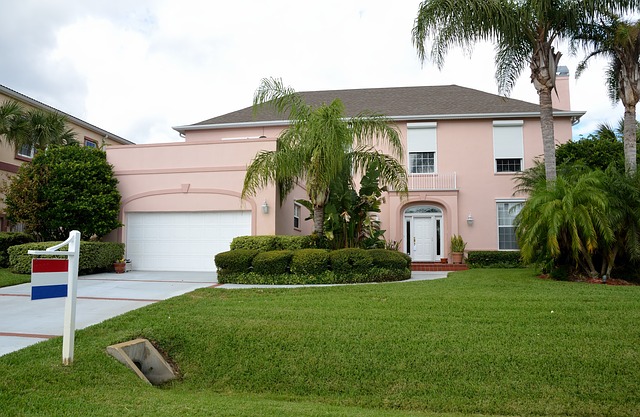 Members of the Federal Reserve’s Federal Open Market Committee voted to hold the target range of the federal funds rate to its current range of 2.25 to 2.50 percent. The minutes of the most recent Committee meeting cited softening domestic and global economic conditions as reason for not raising the target federal funds range.
Members of the Federal Reserve’s Federal Open Market Committee voted to hold the target range of the federal funds rate to its current range of 2.25 to 2.50 percent. The minutes of the most recent Committee meeting cited softening domestic and global economic conditions as reason for not raising the target federal funds range.
While labor markets remained strong, the minutes noted that household spending and business investment slowed in the first quarter of 2019. FOMC members expected Gross Domestic Product growth to slow as compared to its 2018 pace.
While current inflation and the national unemployment rate fell in line with the Fed’s dual mandate of seeking maximum employment and price stabilization, inflation fell due to falling fuel prices. The meeting minutes said that the Committee would be patient as it determined which, if any, action would be appropriate regarding the federal funds rate.
Strong Labor Sector Indicators Offset Lower GDP
Labor sector indicators remained strong with a national unemployment rate of 3.80 percent; labor force participation rose and the ratio of employment to population also rose. Strong employment and consumer sentiment readings suggested that more households may transition from renting to buying homes. Home sales recently fell due to affordability issues and rising mortgage rates.
Factors influencing FOMC monetary policy decisions include labor market conditions, inflation expectations and readings on domestic and international financial developments. The meeting minutes noted that near-term adjustments to monetary policy were dependent on changes to current economic outlook according to emerging data. The Committee consistently says that monetary policy positions can change according to developments in global and domestic economic data.
Fed Chair‘s Press Conference
Federal Reserve Chairman Jerome Powell said during his post-FOMC meeting press conference that the Committee’s “wait and see” stance on raising the target range of the federal funds rate was based on information received since growth expectations based on 2018’s economic growth rate of 3.10 percent. As of September 2018, the Fed forecasted economic growth of 2.50 percent in 2019, but subsequent information caused the Fed to downwardly revise its growth estimate.
Mr. Powell said that global economic slowing was expected in Europe and China; unresolved issues including Brexit and ongoing trade negotiations were given as reasons for slower global economic growth. While domestic and international economic forecasts indicated a modest slowdown in economic growth, Chairman Powell said that overall economic conditions remained favorable.
If you are in the market for a new home, be sure to consult with your trusted real estate professional to get the most up-to-date information about the market trends in your area.
 Real estate isn’t a one-size-fits-all pursuit. Buying and renting multi-unit properties is one of the ways investors build residual income while increasing their property portfolios. However, multi-unit rentals come with some unique challenges. Are you ready to manage a multi-unit rental property?
Real estate isn’t a one-size-fits-all pursuit. Buying and renting multi-unit properties is one of the ways investors build residual income while increasing their property portfolios. However, multi-unit rentals come with some unique challenges. Are you ready to manage a multi-unit rental property? Real estate investors sometimes get stuck in a rut. They repeat the same type of investment that they did before. This is not necessarily a bad thing because a successful experience is worth repeating. However, it is also a good idea to occasionally take a look at the big picture as well, to see what else is out there for investment consideration.
Real estate investors sometimes get stuck in a rut. They repeat the same type of investment that they did before. This is not necessarily a bad thing because a successful experience is worth repeating. However, it is also a good idea to occasionally take a look at the big picture as well, to see what else is out there for investment consideration. Home price indices issued by S&P Case-Shiller showed further slowing in home price growth in January. The national home price index showed 4.30 percent home price growth for the three months ended in January. Analysts expected home prices to grow 4.20 percent for the same period in cities surveyed by Case-Shiller. More cities reported declines in home prices than those that posted gains in home prices.
Home price indices issued by S&P Case-Shiller showed further slowing in home price growth in January. The national home price index showed 4.30 percent home price growth for the three months ended in January. Analysts expected home prices to grow 4.20 percent for the same period in cities surveyed by Case-Shiller. More cities reported declines in home prices than those that posted gains in home prices. Builder sentiment held steady in March as headwinds in housing markets affected homebuilder confidence, but National Association of Home Builders Chairman Greg Ugalde said that builders were looking forward to a “solid spring home-buying season.” Builder sentiment mirrored February’s index reading of 62; analysts expected an uptick to 63.
Builder sentiment held steady in March as headwinds in housing markets affected homebuilder confidence, but National Association of Home Builders Chairman Greg Ugalde said that builders were looking forward to a “solid spring home-buying season.” Builder sentiment mirrored February’s index reading of 62; analysts expected an uptick to 63. Case-Shiller Home Price Indices reported the slowest rate of U.S. home price growth since November 2014. According to the 20-City Home Price Index, Home prices grew by 4.20 percent year-over-year and were 0.20 percent higher in December as compared to November. The 20-City Home Price Index fell short of analysts’ expected gain of 4.80 percent year-over-year. Case-Shiller’s National Home Price Index reported home prices increased 4.70 percent in the fourth quarter of 2018.
Case-Shiller Home Price Indices reported the slowest rate of U.S. home price growth since November 2014. According to the 20-City Home Price Index, Home prices grew by 4.20 percent year-over-year and were 0.20 percent higher in December as compared to November. The 20-City Home Price Index fell short of analysts’ expected gain of 4.80 percent year-over-year. Case-Shiller’s National Home Price Index reported home prices increased 4.70 percent in the fourth quarter of 2018.